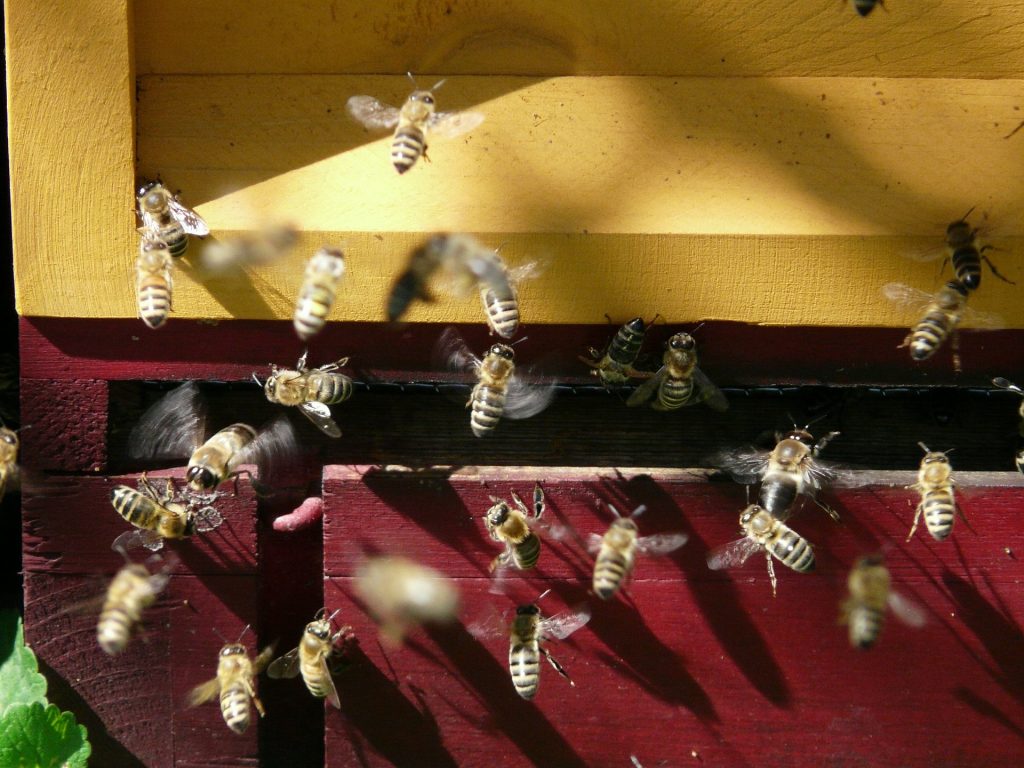Many beekeepers are scared from this time of the year – the period of March and April. Beekeeping in March is not so complicated as it seems. We just need to know what is happening and be aware of our bees‘ condition. The general idea behind beekeepers’ panicking is the fact that many beekeepers lose a lot of colonies during this period.
One of the things that should be pointed out is that beekeepers generally have one mistake in their way of thinking. They think that since it is March and it is the beginning of spring, their bees survived the winter. Therefore, they think that they should not worry and take care of the bees. However, especially beekeepers in the northern areas should be aware of several things. The weather is not stable yet, the population of the bee colonies is changing, worker bees‘ problems with brood.
The main problem is that temperatures are constantly fluctuating. This makes March the trickiest month of all. Additionally, there is no forage for the bees. This is why it happens so often that bees survive through the winter, but do not make it in early spring.
Beekeeping in March: The changes inside the colonies
When autumn comes, a lot of changes happen within the beehive. The worker bees evict the drones, the colony is preparing for winter, etc. Brood rearing is at a very low level, and this depends on the location where you live. Then the winter comes, the colonies are trying to survive it, and we are helping them by doing some small inspections. In order to survive i.e. to keep the colony warm and heated, bees require some food. The amount of food we need to provide is always different and it depends on the temperature. However, it stays more or less constant during the winter. Even though the colony may survive the winter, a lot of bees die and decreases its size.
However, as soon as the winter passes and the weather starts getting a bit better, the queen starts laying eggs. In this case, the brood nest is increasing and the adult bees start dominating the bee population. As a result, we have an increased need for food. This is the main problem, the increased need for food.
Important things can be overlooked
Maybe a general characteristic of beekeeping, especially for beginner beekeepers, is that many important things can be overlooked. In March, the beehive does not look very different from its appearance in the winter, if we look it from the outside.
For example, the bees can die even if we leave all of their honey. In this case, we should be very careful about how we feed them. We should check them more often in order to be able to notice if the number of bees has increased. Therefore, we can feed them accordingly, changing the dose of food we give them. If we overlook the increasing number of bees, the provided food might not be enough, so the bees may starve.
Another reason why colonies can starve is because of the fact that honey bees are not the best in leaving their cluster to find food. Even though the food may be several frames away, still the colonies may die.
Beekeeping in March Checklist:
- If you have some hives that did not survive, try to understand why this happened. Look into the beehive for signs. If you do not see any honey, it means that they died from starvation. If you see any signs for mice that have entered the hive – this may be the reason for their death. Additionally, if you notice that the cluster is close to the edge of the walls, the bees might have died from exposure. Looking for these signs can give you a good insight into what was wrong. You can, therefore, understand what you need to improve, what was wrong the previous time.
- Use load-balancing. This means that if you have some hives that did not survive the winter, you can transfer the honey from the dead beehives to the existing ones.
- Start cleaning the beehive and prepare it for new bees. The cleaning is mostly devoted to removing the dead bees. The easiest way to do this is to take off the vent system and let the dead bees fall to the ground. An additional tip in cleaning the hives is to leave the mouse guards. Mice might still be looking for food and shelter.
- Start feeding the bees with a 1:1 ration of water:sugar. Additionally, do not forget to look after the beehives more often.
For beekeeping in March, it is recommended to constantly monitor, feed and clean the beehives. Once your bees have survived March – you are definitely in a good position to start another wonderful beekeeping season.


Thank you so much for ‘Beekeeping in March’. So useful the information and raises awareness again of what to do and if there are loses within the hive. Each year is different from the one before and just as I think I have it all sorted out the Winter poses yet another problem I had’nt thought of.
Regards
Linda Hill
South East Sussex
In articles like this – where the subject is “what to do during a specific time of year”, I believe it is ABSOLUTELY IMPERATIVE that the location for the advice be discussed. Or at least mentioned.
March in South Texas is vastly different than March in Oklahoma. Not to mention South Dakota.